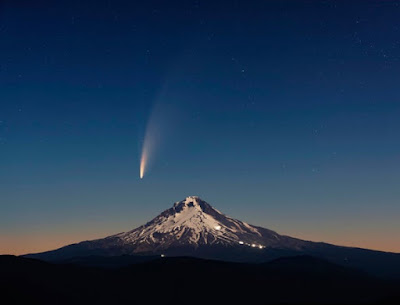Credit: Pete Saloutos/Getty Images
Topics: Astronomy, Astrophysics, Comets, Philosophy, Science Fiction
On a recent morning, in Lower Manhattan, 20 scientists, including me, gathered for a private screening of the new film Don’t Look Up, followed by lunch with the film’s director, Adam McKay.
The film’s plot is simple. An astronomy graduate student, Kate Dibiasky (Jennifer Lawrence), and her professor, Randall Mindy (Leonardo DiCaprio), discover a new comet and realize that it will strike the Earth in six months. It is about nine kilometers across, like the one that wiped out the dinosaurs 66 million years ago. The astronomers try to alert the president, played by Meryl Streep, to their impending doom.
“Let’s just sit tight and assess,” she says, and an outrageous, but believable comedy ensues, in which the astronomers wrangle an article in a major newspaper and are mocked on morning TV, with one giddy host asking about aliens and hoping that the comet will kill his ex-spouse.
At last, mainstream Hollywood is taking on the gargantuan task of combatting the rampant denial of scientific research and facts. Funny, yet deadly serious, Don’t Look Up is one of the most important recent contributions to popularizing science. It has the appeal, through an all-star cast and wicked comedy, to reach audiences that have different or fewer experiences with science.
Don’t Look Up isn’t a movie about climate change, but one about planetary defense from errant rocks in space. It handles that real and serious issue effectively and accurately. The true power of this film, though, is in its ferocious, unrelenting lampooning of science deniers.
After the screening, in that basement theater in SoHo, McKay said: “This film is for you, the scientists. We want you to know that some of us do hear you and do want to help fight science denialism.”
Hollywood Can Take On Science Denial: Don’t Look Up Is a Great Example, Rebecca Oppenheimer, curator, and professor of astrophysics at the American Museum of Natural History/Scientific American
